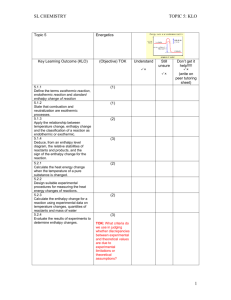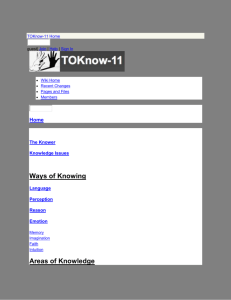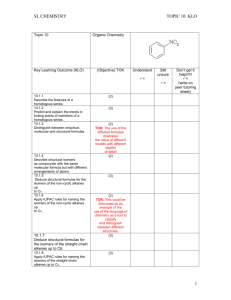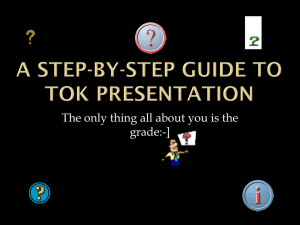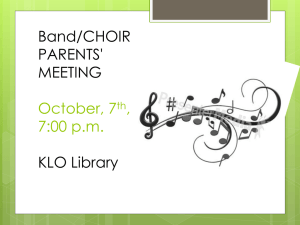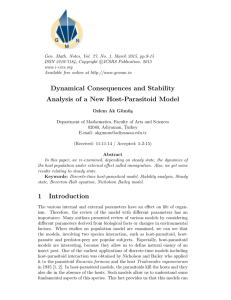Topic 1 & 11
advertisement
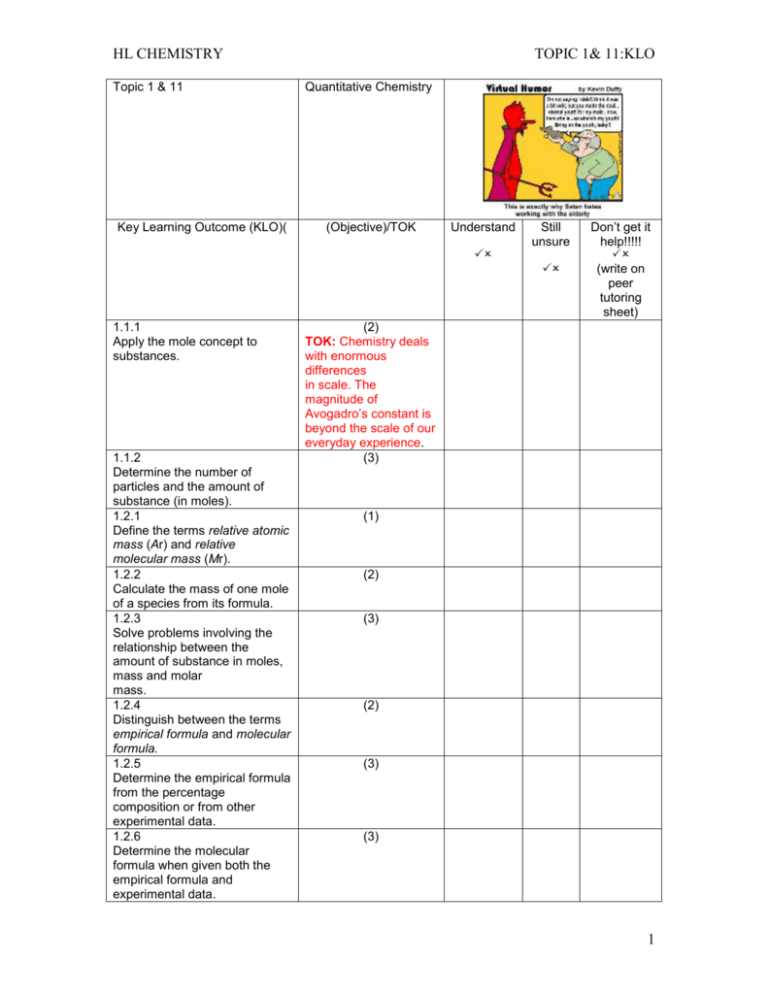
HL CHEMISTRY Topic 1 & 11 Key Learning Outcome (KLO)( TOPIC 1& 11:KLO Quantitative Chemistry (Objective)/TOK Understand Still unsure 1.1.1 Apply the mole concept to substances. 1.1.2 Determine the number of particles and the amount of substance (in moles). 1.2.1 Define the terms relative atomic mass (Ar) and relative molecular mass (Mr). 1.2.2 Calculate the mass of one mole of a species from its formula. 1.2.3 Solve problems involving the relationship between the amount of substance in moles, mass and molar mass. 1.2.4 Distinguish between the terms empirical formula and molecular formula. 1.2.5 Determine the empirical formula from the percentage composition or from other experimental data. 1.2.6 Determine the molecular formula when given both the empirical formula and experimental data. Don’t get it help!!!!! (write on peer tutoring sheet) (2) TOK: Chemistry deals with enormous differences in scale. The magnitude of Avogadro’s constant is beyond the scale of our everyday experience. (3) (1) (2) (3) (2) (3) (3) 1 HL CHEMISTRY Topic 1 & 11 Key Learning Outcome (KLO) TOPIC 1& 11:KLO Quantitative Chemistry (Objective)/TOK Understand Still unsure 1.3.1 Deduce chemical equations when all reactants and products are given. 1.3.2 Identify the mole ratio of any two species in a chemical equation. 1.3.3 Apply the state symbols (s), (l), (g) and (aq). 1.4.1 Calculate theoretical yields from chemical equations. 1.4.2 Determine the limiting reactant and the reactant in excess when quantities of reacting substances are given. 1.4.3 Solve problems involving theoretical, experimental and percentage yield 1.4.4 Apply Avogadro’s law to calculate reacting volumes of gases. 1.4.5 Apply the concept of molar volume at standard temperature and pressure in calculations. Don’t get it help!!!!! (write on peer tutoring sheet) (3) (2) (2) TOK: When are these symbols necessary in aiding understanding and when are they redundant? (2) (3) (3) (2) (2) 2 HL CHEMISTRY Topic 1 & 11 Key Learning Outcome (KLO) TOPIC 1& 11:KLO Quantitative Chemistry (Objective)/TOK Understand Still unsure 1.4.6 Solve problems involving the relationship between temperature, pressure and volume for a fixed mass of an ideal gas. 1.4.7 Solve problems using the ideal gas equation, PV = nRT 1.4.8 Analyse graphs relating to the ideal gas equation. 1.5.1 Distinguish between the terms solute, solvent, solution and concentration (g dm–3 and mol dm–3). 1.5.2 Solve problems involving concentration, amount of solute and volume of solution. Don’t get it help!!!!! (write on peer tutoring sheet) (3) (3) TOK: The distinction between the Celsius and Kelvin scales as an example of an artificial and natural scale could be discussed. (3) (2) (3) 3 HL CHEMISTRY Topic 1 & 11 Key Learning Outcome (KLO) TOPIC 1& 11:KLO Quantitative Chemistry (Objective)/TOK Understand Still unsure 11.1.1 Describe and give examples of random uncertainties and systematic errors. 11.1.2 Distinguish between precision and accuracy 11.1.3 Describe how the effects of random uncertainties may be reduced. 11.1.4 State random uncertainty as an uncertainty range (±). 11.1.5 State the results of calculations to the appropriate number of significant figures. 11.2.1 State uncertainties as absolute and percentage uncertainties. 11.2.2 Determine the uncertainties in results. 11.3.1 Sketch graphs to represent dependences and interpret graph behaviour. 11.3.2 Construct graphs from experimental data. 11.3.3 Draw best-fit lines through data points on a graph 11.3.4 Determine the values of physical quantities from graphs. Don’t get it help!!!!! (write on peer tutoring sheet) (2) (1) (2) (1) (1) (2) (3) (3) (3) (1) (3) . 4
